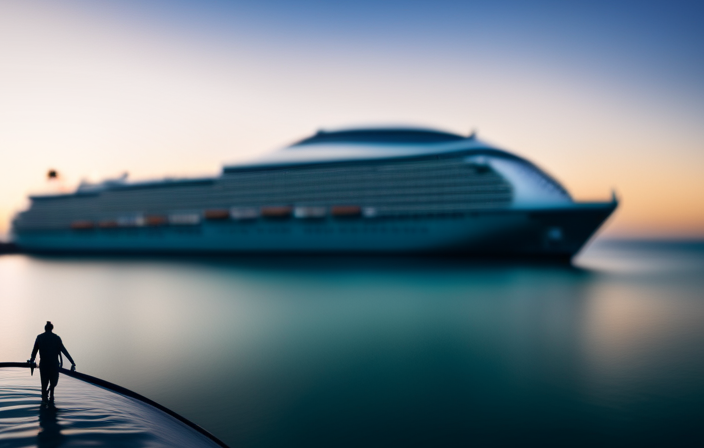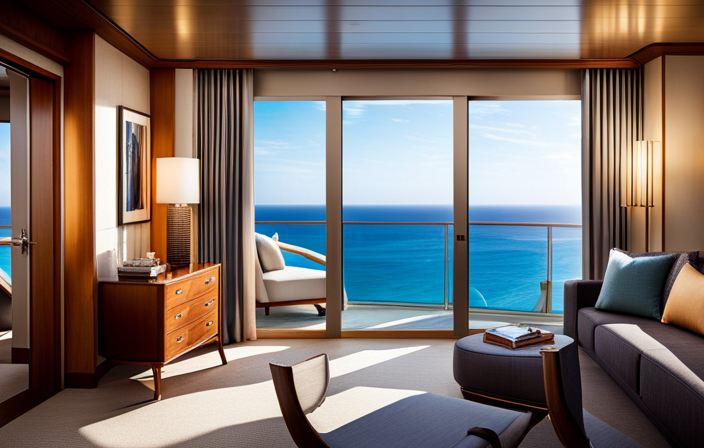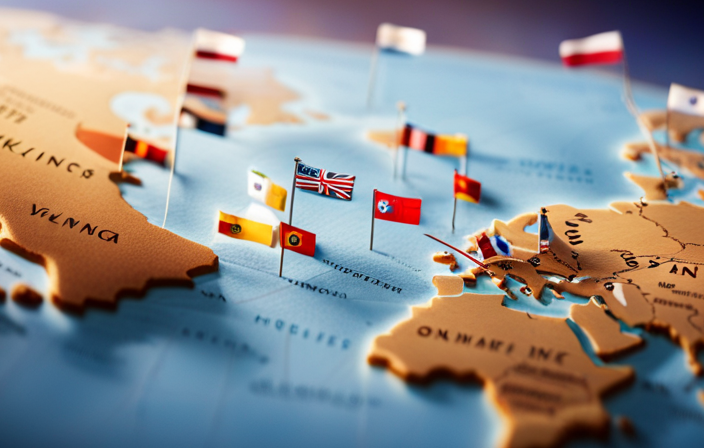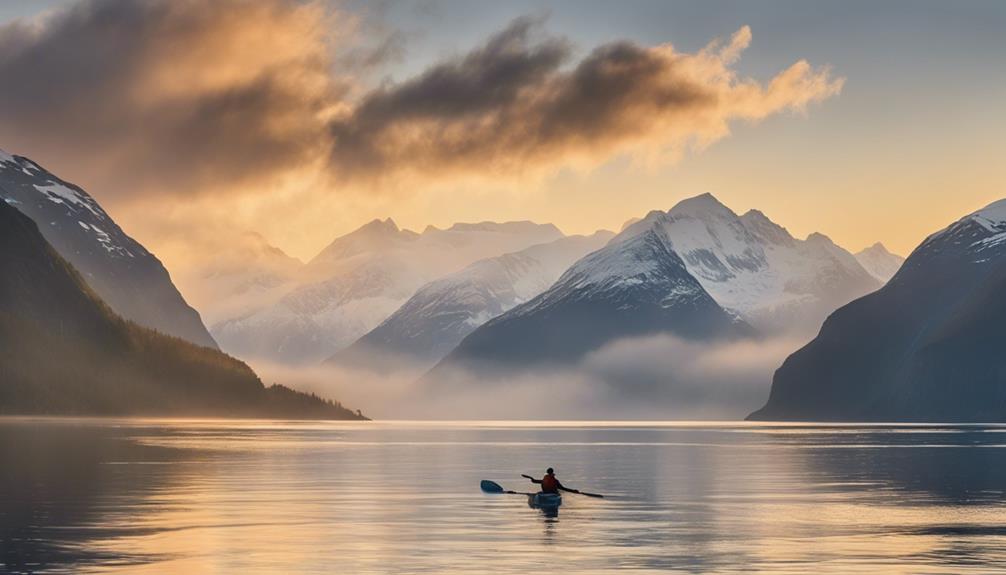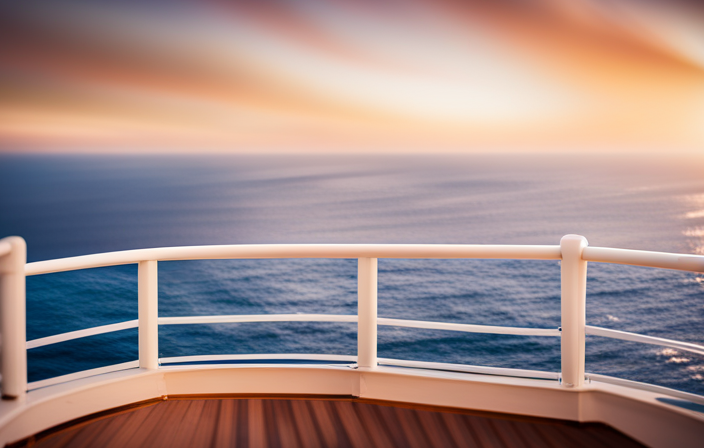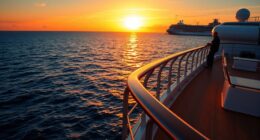Have you ever pondered how cruise ships – these massive symbols of opulence and state-of-the-art technology – are able to remain buoyant? It may seem almost incredulous that something of such magnitude and weight could float and move smoothly across the water. Nevertheless, rest assured, there is a lot more happening beneath the surface than what is apparent at first glance.
In this article, we will delve into the intricate world of buoyancy and unravel the secrets behind why cruise ships float. We will explore Archimedes’ principle, which forms the very foundation of naval architecture, as well as the design and construction techniques employed in building these mammoth vessels.
Additionally, we will discuss the role of air and water displacement, propulsion systems that propel these floating palaces forward, and even touch upon environmental considerations for a sustainable future.
So sit back, relax, and prepare to have your curiosity satisfied as we embark on this journey through the fascinating world of cruise ship technology.
Key Takeaways
- Cruise ships float due to the principle of buoyancy, which is based on weight distribution and the displacement of water.
- Archimedes’ principle explains that the upward buoyant force is equal to the weight of the fluid displaced, allowing cruise ships to counteract gravity and stay afloat.
- The design and construction of cruise ships involve meticulous calculations, advanced simulations, and the use of lightweight materials to optimize buoyancy, stability, and structural integrity.
- Factors such as the shape and size of the ship, waterline and draft, propulsion systems, and safety measures all contribute to the ability of cruise ships to float and operate efficiently.
The Concept of Buoyancy
So, you’re probably wondering how these massive cruise ships manage to stay afloat in the water. Well, it all comes down to the concept of buoyancy.
The key to their underwater stability lies in their weight distribution. Cruise ships are designed with a lower center of gravity, which helps maintain balance and prevent tipping over. This is achieved by strategically placing heavy components like engines and fuel tanks at the bottom of the ship.
Additionally, cruise ships are built with large hollow sections called hulls that displace water as they float. According to Archimedes’ principle, an object immersed in a fluid experiences an upward buoyant force equal to the weight of the fluid displaced.
Understanding Archimedes’ principle is crucial because it explains why objects float or sink in fluids and plays a significant role in designing floating structures like cruise ships.
Understanding Archimedes’ Principle
Understanding Archimedes’ Principle is crucial for fully grasping the fascinating phenomenon behind how majestic vessels stay buoyant in water. This principle states that the upward buoyant force acting on an object immersed in a fluid is equal to the weight of the fluid displaced by that object.
In simpler terms, when a cruise ship is placed in water, it displaces an amount of water equal to its own weight. This displacement creates an upward force that counteracts the downward force of gravity, allowing the ship to float effortlessly. It’s similar to how a person can float in water by using specific swimming techniques, such as taking deep breaths and spreading out their body surface area.
Understanding this principle of buoyancy is crucial for underwater exploration and designing cruise ships that are stable and safe.
Transitioning into the subsequent section about ‘design and construction’, we can now explore how engineers incorporate Archimedes’ Principle into these massive floating structures.
Design and Construction of Cruise Ships
You won’t believe the incredible feats of engineering that go into creating these massive floating marvels! Design innovations and shipbuilding techniques play a crucial role in constructing cruise ships. These vessels are carefully designed to ensure stability, safety, and efficiency. The design process involves meticulous calculations to determine the shape, size, and weight distribution of the ship. Advanced computer simulations are used to model the hydrodynamics and structural integrity of the vessel. Shipbuilders employ various construction methods, such as welding and riveting, to assemble the different sections of the ship. Additionally, they utilize lightweight materials like aluminum alloys to reduce weight while maintaining strength. A table showcasing some key design features could illustrate this point:
| Design Innovations | Shipbuilding Techniques |
|---|---|
| Hull Shape | Welding |
| Stabilizers | Riveting |
| Propulsion System | Lightweight Materials |
As I delve into discussing the role of air and water displacement in the next section…
The Role of Air and Water Displacement
When it comes to the role of air and water displacement in cruise ship design, two key factors are the shape and size of the ship.
The shape of the hull is carefully designed to maximize buoyancy and minimize drag, allowing the ship to float and move efficiently through the water.
Additionally, the size of the ship plays a crucial role in determining its stability and ability to displace enough water to support its weight.
Another important consideration is the waterline and draft of the ship, which determine how much of the hull is submerged in water when fully loaded.
This affects not only buoyancy but also maneuverability, as a deeper draft allows for better stability but may limit access to shallower ports.
Shape and Size of the Ship
The shape and size of the ship play a crucial role in its ability to float effortlessly on the water. A cruise ship’s design is meticulously engineered to provide optimal shape and stability, enabling it to navigate through different weather conditions while ensuring safety and comfort.
Shape:
- The hull of a cruise ship is typically streamlined, featuring a bulbous bow that reduces drag and enhances fuel efficiency.
- The overall shape of the ship contributes to its stability, allowing it to remain upright even in rough seas.
Size:
- Cruise ships are colossal structures, often weighing thousands of tons.
- The construction materials must possess sufficient strength to support the weight while remaining buoyant.
By taking into account factors such as shape and size, engineers are able to create vessels that effortlessly glide through the water. Understanding these principles leads us to another crucial aspect of how cruise ships float – their waterline and draft.
Waterline and Draft
A cruise ship’s waterline and draft are crucial for smooth navigation through open waters. The waterline refers to the level at which the ship sits in the water when fully loaded. Factors like weight distribution and cargo load determine the waterline.
On the other hand, the draft is the vertical distance between the waterline and the lowest point of the ship’s hull. By displacing water equal to its weight, the ship achieves stability. A deeper draft means more of the ship is submerged, creating greater stability but also increasing drag.
Both waterline and draft directly impact a cruise ship’s ability to move efficiently through the water. As we transition into discussing ‘the power of propulsion,’ it is important to note their significance.
The Power of Propulsion
Propulsion is like the heartbeat of a cruise ship, propelling it through the water with the force of a thousand engines. Cruise ships utilize various propulsion methods to achieve energy efficiency and ensure smooth navigation.
The most common method is using diesel-electric engines, where diesel generators produce electricity that powers electric motors connected to the ship’s propellers. This setup allows for precise control of speed and direction, resulting in better maneuverability.
Additionally, some cruise ships are equipped with azimuth thrusters, which are propellers that can rotate 360 degrees, providing even greater maneuvering capabilities.
To maximize energy efficiency, advanced technologies such as waste heat recovery systems are employed to capture and reuse excess heat from engine exhausts. These measures not only reduce fuel consumption but also minimize environmental impact.
As we explore safety measures and life-saving equipment on board these vessels, it becomes evident how crucial they are in ensuring passenger well-being without compromising on comfort and luxury.
Safety Measures and Life Saving Equipment
Imagine yourself on board a magnificent vessel, surrounded by advanced safety measures and life-saving equipment that ensure your well-being at all times. When it comes to cruise ships, safety is of utmost importance.
Life jacket regulations are strictly enforced to guarantee the protection of every passenger in case of an emergency. Each person is required to have access to a properly fitting life jacket that meets international standards.
Additionally, emergency evacuation procedures are meticulously planned and practiced regularly to ensure an efficient response in any crisis situation. Crew members are trained extensively on how to guide passengers towards designated assembly points and safely evacuate the ship if necessary.
These measures contribute to creating a safe environment for all onboard.
As we transition into the next section about maintenance and monitoring of the ship’s condition, it is important to note that these safety measures go hand in hand with regular inspections and checks to maintain the integrity of the vessel.
Maintenance and Monitoring of Ship’s Condition
You may think that being on a magnificent vessel, surrounded by advanced safety measures and life-saving equipment, means you don’t have to worry about the maintenance and monitoring of the ship’s condition. However, ensuring the proper functioning and longevity of a cruise ship requires diligent maintenance techniques and continuous condition monitoring.
Maintenance techniques involve regular inspections, lubrication of machinery, cleaning of critical systems, and timely repairs. This proactive approach helps prevent potential failures or malfunctions that could compromise the safety or performance of the ship. Additionally, condition monitoring involves using various sensors and instruments to assess the health and performance of essential components such as engines, propulsion systems, electrical systems, and structural integrity.
By employing these meticulous maintenance techniques and continuously monitoring the ship’s condition, cruise lines can ensure smooth operations while keeping passengers safe. Transitioning into the subsequent section about ‘impact of weather and waves on cruise ships,’ it is crucial to understand how these factors can affect both maintenance efforts and overall voyage experience.
Impact of Weather and Waves on Cruise Ships
As discussed in the previous section, the maintenance and monitoring of a cruise ship’s condition is crucial for ensuring its safe operation. However, another important factor that can greatly impact the safety of cruise ships is the weather and waves they encounter during their voyages.
With climate change causing an increase in extreme weather events, it is essential for cruise ship operators to be prepared for any potential risks. This includes having emergency response procedures in place to handle severe storms, hurricanes, or other adverse conditions. These procedures may involve altering course to avoid dangerous weather patterns or taking necessary precautions to ensure passenger and crew safety.
Furthermore, cruise ships must also consider the long-term impact of climate change on their operations. As environmental regulations become stricter, implementing sustainable practices will be crucial for the industry’s future success.
Transitioning into the next section about environmental considerations and sustainability…
Environmental Considerations and Sustainability
Get ready to embark on a journey exploring the vital importance of environmental considerations and sustainability when it comes to cruising. Cruise lines are increasingly implementing sustainability measures and eco-friendly practices to minimize their impact on the environment.
Here are three key ways in which cruise ships are striving towards a greener future:
-
Energy-efficient technologies: Cruise ships are adopting advanced propulsion systems that reduce fuel consumption and emissions, such as using liquefied natural gas (LNG) as a cleaner alternative to traditional fuels.
-
Waste management: Cruise lines have implemented comprehensive waste management systems onboard, including recycling programs and wastewater treatment plants, ensuring that waste is properly disposed of and minimizing pollution.
-
Marine conservation initiatives: Many cruise companies actively support marine conservation efforts by partnering with organizations dedicated to protecting oceans and wildlife, promoting sustainable tourism practices.
By embracing these sustainability measures and eco-friendly practices, cruise ships are paving the way for a more environmentally conscious industry.
As we delve into future innovations in cruise ship technology, we will witness even greater strides towards a greener tomorrow without compromising on luxury or comfort.
Future Innovations in Cruise Ship Technology
Imagine stepping on board a sleek and modern vessel, where state-of-the-art technology seamlessly blends with luxurious amenities, offering you an unforgettable cruising experience. The future advancements in cruise ship technology promise to revolutionize the industry.
Technological innovations are being developed to enhance safety, efficiency, and sustainability.
One area of focus is propulsion systems. Cruise lines are exploring alternative fuel sources such as liquefied natural gas (LNG) and battery power to reduce emissions. Advanced propulsion systems will not only minimize environmental impact but also improve maneuverability and speed.
Moreover, the integration of artificial intelligence (AI) and automation will optimize onboard operations. AI-powered systems can monitor energy consumption, manage waste disposal, and streamline maintenance processes for improved efficiency.
Additionally, virtual reality (VR) and augmented reality (AR) technologies are expected to enhance the onboard entertainment experience. Passengers will be able to immerse themselves in interactive virtual environments or enjoy real-time information overlays during shore excursions.
The future of cruising holds exciting possibilities with these technological innovations that prioritize sustainability while offering passengers an unparalleled journey at sea.
Frequently Asked Questions
What are some common amenities and facilities found on cruise ships?
Onboard entertainment and dining options are some of the common amenities and facilities found on cruise ships. The ship offers a wide range of activities, from live shows to casinos, and multiple dining venues serving various cuisines.
How do cruise ships generate and distribute electricity on board?
Cruise ships generate electricity through onboard power plants, typically using diesel or gas turbines. This electricity is then distributed throughout the ship via an extensive network of cables and transformers, providing power to all onboard systems and amenities.
What are the different types of staterooms available on a cruise ship?
There are various stateroom options on a cruise ship, each offering different types of accommodations. These options include interior rooms, oceanview rooms, balcony rooms, and suites, providing passengers with a range of choices for their stay onboard.
How do cruise ship passengers stay connected to the internet while at sea?
To stay connected at sea, cruise ship passengers can access the internet through various methods such as satellite communication systems and onboard Wi-Fi networks. These technologies allow for reliable and continuous internet access throughout the duration of the voyage.
Are there any age restrictions for passengers on cruise ships?
Passengers on cruise ships may be subject to age restrictions and health requirements. These regulations ensure the safety and well-being of all individuals onboard. Specific age limits and medical criteria vary depending on the cruise line and destination.
Conclusion
After delving into the intricate workings of cruise ships, it becomes evident that their ability to float is a mesmerizing feat.
The careful balance of buoyancy and Archimedes’ principle ensures that these colossal vessels gracefully glide through the water.
From the thoughtfully designed construction to the powerful propulsion systems, every aspect contributes to their seamless operation.
Weather conditions and environmental considerations play crucial roles in maintaining their stability.
As we look towards the future, innovative technologies will continue to shape the world of cruise ships, promising even more astonishing voyages ahead.

